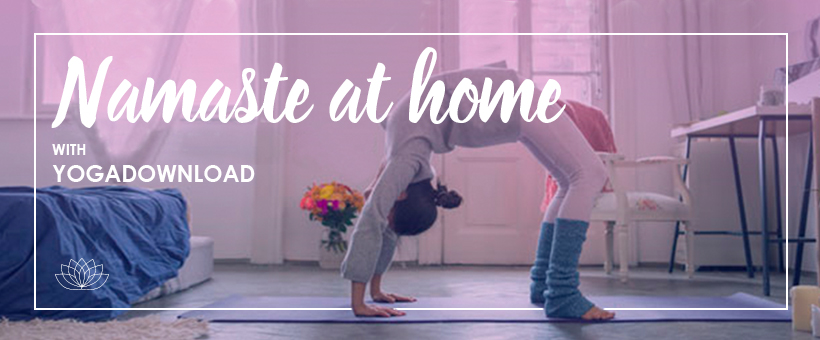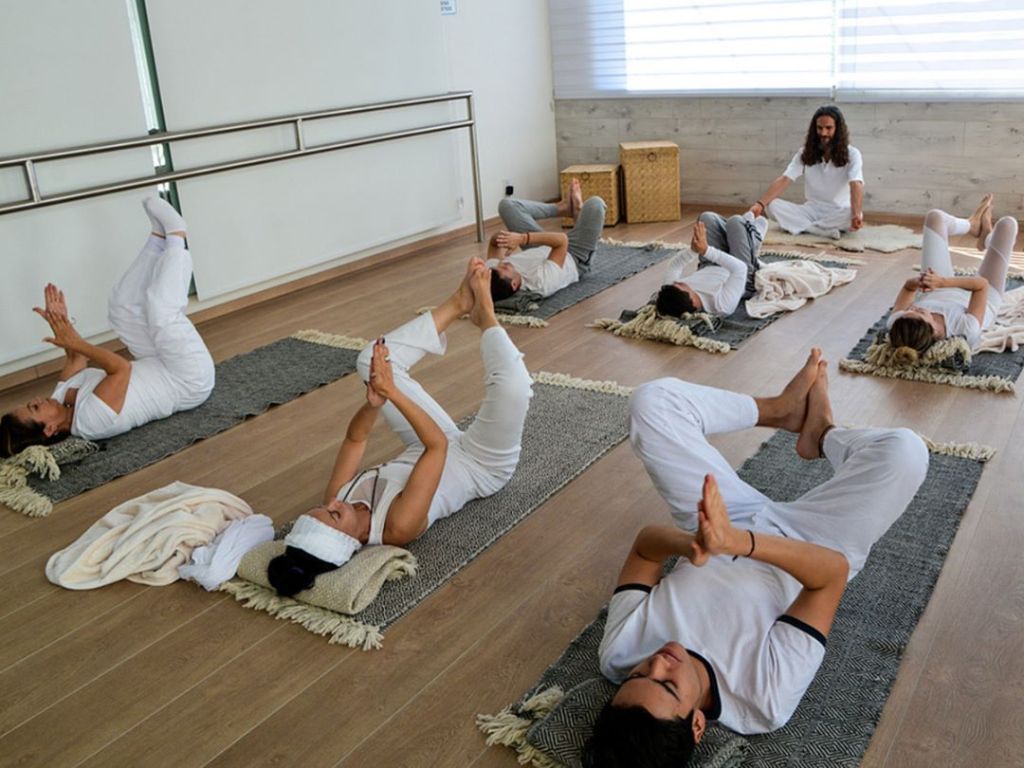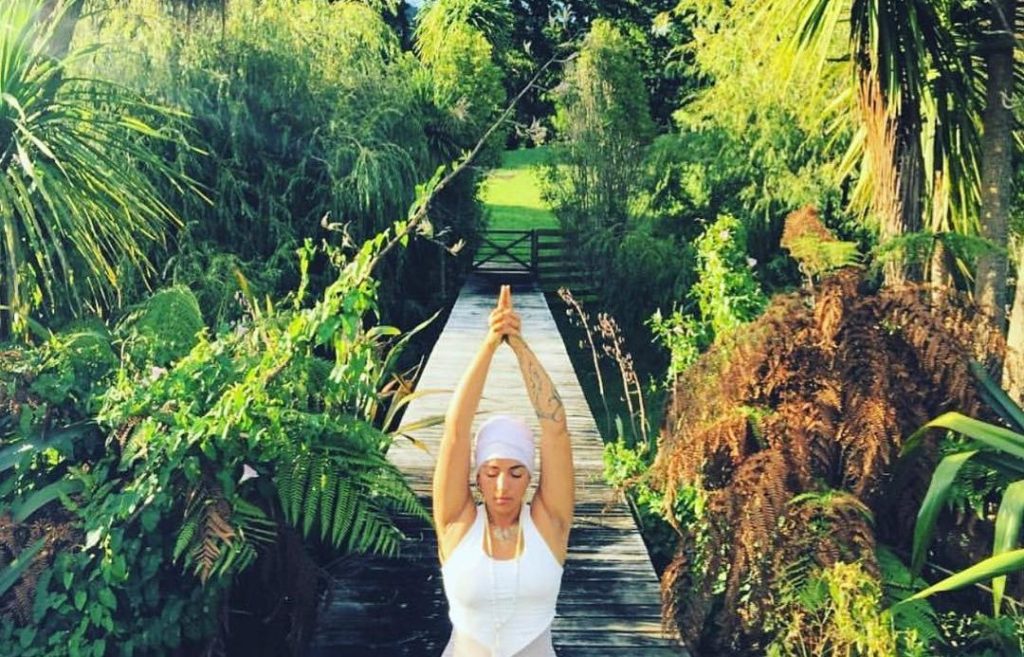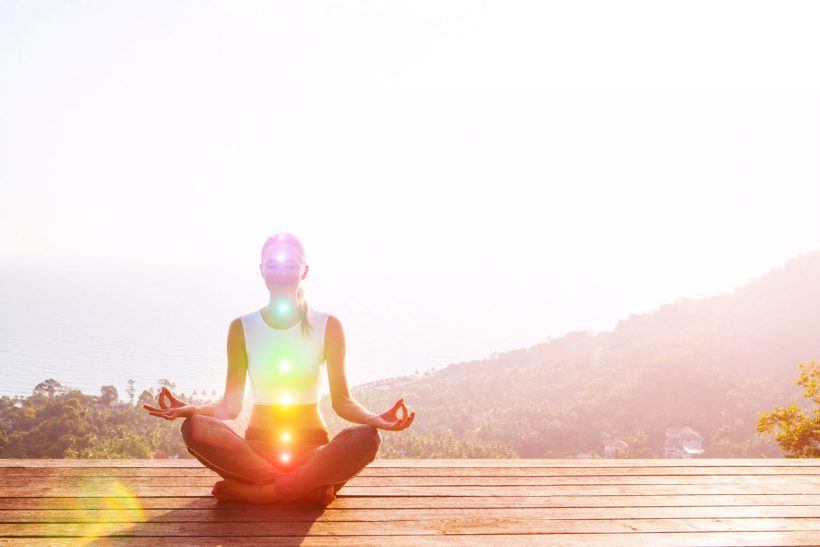Kundalini yoga to free the chakras
Kundalini Yoga came to the West in 1968 when Yogi Bhajan began teaching it in California.
Yogi Bhajanis known to be the founder of 3HO (for Healthy, Happy, Holy Organization), a foundation established in 1969 to introduce Kundalini yoga to a wider population. Prior to that date, this type of yoga was only found in India where it was passed down in tradition and was reserved for the nobility.
But Yogi Bhajan was convinced that everyone deserved to know about it, as Kundalini has so many benefits. It is thanks to him that we can now enjoy it. If you want to get into it like Demi Moore or Russel Brand, I'll tell you what it's all about and what to expect!
WHAT IS THE PURPOSE OF KUNDALINI YOGA?
The goal of Kundalini Yoga is to awaken the energy of the same name, the kundalini, which rests at the base of the spine. This energy is often represented as a snake coiled at the bottom of the spine.
Two lines of energy move up and around the base of the spine, articulating at seven points called chakras. Each chakra has a function that keeps us healthy. The rhythmic and regular movement of the kundalini triggers the flow of energy and corrects any imbalance in the chakras.
Once the energy flows properly, the yogi becomes more conscious, more integrated with reality, and enters a higher state of consciousness. Greater awareness leads to a happier and more productive life. This is the purpose of kundalini.

How does a kundalini yoga course take place?
Kundalini yoga uses and mixes all the yogic tools, from mantras (sacred sounds), asanas (postures), mudras (hand positions), bandhas (body locking), meditation (conscious concentration) and pranayama (breathing technique) to help you feel the benefits from your very first class.
But it can be good to know what to expect, and here are a few things to help you get an idea, so you won't be surprised!

1. You may be singing a ditty!
Mantras are widely used in Kundalini yoga. They are sacred sounds used both for their meaning and for the vibration they create in the body. There are specific intentions behind each of these sounds, and you will surely chant them throughout the class.
Kundalini classes usually begin by chanting the mantra Ong Namo Guru Dev Namo. It is a way of saying "I bow before the creative consciousness. I bow before the divine wisdom that is within me."
It is a form of meditation that connects to a higher state of consciousness, beyond the ego.
That's for the introduction! There is also a mantra to close the class: Sat Nam (which also replaces the traditional namaste). Between these two mantras, you will be led to chant more or less regularly, depending on the teacher.
2. We focus a lot on breathing...
Kundalini yoga uses breathing extensively to deepen the yogic experience.
According to yogic philosophy, breathing is the bridge that connects body and mind. This means that the more you learn to focus on breathing, the more you have the ability to calm your restless mind. Conscious breathing can help relieve stress and anxiety, both in and out of the classroom.
3. And on meditation.
The emphasis is therefore on breathing and inner concentration between postures. Kundalini yoga is more meditative than other styles of yoga.
However, these meditation phases are accessible to perfect beginners because they involve several types of meditation such as mantras or particular movements. It is therefore easier to reach a deep state, even when one knows nothing about it.
4. Kundalini is unlike any other type of yoga.
In practice, Kundalini resembles sequences of intense efforts followed by intervals of relaxation.
Just after the opening mantra of the class, there is usually a pranayama (yogic breathing exercise) followed by a sequence of postures (kriya). Each series will have different poses that involve movement, breathing techniques or a mantra. Between poses, you will have a minute or two to relax and concentrate.
Finally, there is a relaxation followed by a meditation, then the final mantra.
Although the movements are usually quite simple, you will see that they can become quite physical, causing the mind to react. The key here is to do your best. Always listen to your body, but at the same time, see if you can push yourself out of your comfort zone. Kundalini Yoga challenges your body to push the mental limits you set for it.
5. Get ready to see life in white.
Kundalini teachers usually wear white clothes made of cotton or other natural fibers, because it strengthens the aura.
Your aura is the electromagnetic field that surrounds you and acts as a container for your vital energy, protecting you from all forms of negativity. Wearing white creates a better bulwark.
Your teacher may even wear a white head covering, such as a hat, scarf or turban, to contain the energy inside the body. As a student, you are welcome to wear any color you like and experiment with white if you like it.

IS KUNDALINI FOR YOU?
Well, I know, it must sound a bit mystical to you, and you probably think this is not your cup of tea.
Yes, Kundalini is one of the most spiritual types of yoga. It goes beyond asanas by emphasizing the opening of the chakras through pranayama, meditation, mudras, bandhas and chanting.
However, Kriyas (series of postures) can still be very intense. Kundalini is for people who want a method of yoga that remains grounded in the body while incorporating all the traditional tools of a yogi to achieve enlightenment.
It is important to keep in mind that there are hundreds of different Kundalini practices. While there are certainly postures and movements that come up over and over again, classes may vary from teacher to teacher. Don't reject a new class just because you have already tried it once elsewhere.
Well, the best way to understand Kundalini is to experience it for yourself. Now that you know what to expect, why not give it a try?
BONUS: YOGI BHAJAN TEA RECIPE
Our famous Kundalini master used to serve his students an infusion called "Yogi tea". This infusion was supposed to help the disciples find inner peace and open up to the fabulous world of Ayurveda.
I thought you might like to have the recipe for this tea on hand!
WHAT YOU'LL NEED FOR A CUP :
- 230ml of water
- 3 crushed green cardamom pods
- 3 cloves
- 4 whole black peppercorns
- ½ cinnamon stick
- ½ teaspoon black tea
- 2 slices of fresh ginger root
Preparation :
1. Bring the water to the boil and add the spices.
2. Cover and simmer for 15 to 20 minutes, then add the black tea.
3. Leave to brew for 3 to 5 minutes, filter and serve with milk or honey (optional).


